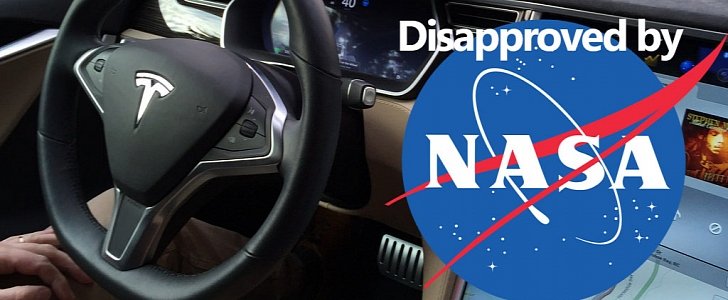Ever since that regretful fatal accident in June involving a Tesla Model S running on Autopilot, the semi-autonomous system has come under scrutiny from all sides. The NHTSA is still analyzing the incident trying to find out who was to blame, but other entities have voiced their concern over the early implementation of the Autopilot as well.
Apart from a lot of media outlets who questioned Tesla's decision to put the feature on the market so soon, there have been some other voices that carry a lot more weight than journalists usually do. Take NASA, for example, the North American Space Agency who, over the years, has conducted tests on the psychological effects of automation on humans for years and has plenty of insights into the matter.
The studies were intended for aviation use, but it's all the same with cars now. As Stephen Casner, a research psychologist at NASA's Human Systems Integration Division told Scientific American, "cars in 2017 equal airplanes in 1983." And even though they don't fly, judging by the level of automation, you have to agree with him.
He says the main issue with semi-autonomous systems in cars is the time in which the human operator is required to regain control of the vehicle. The fact that this moment can occur at any time means that the driver has to be constantly alert, something that studies have shown to be absolutely impossible.
Elon Musk kept defending the feature by saying it is similar to the ones used in airplanes, hence the name. Mr. Casner disagrees, saying that in aviation, the pilot is eased back into control, whereas the Tesla Autopilot can require the driver to take command in no more than a second.
Ironically, it turns out that the better the automated system, the greater the chances for the driver to distance themselves from the traffic, thus increasing the danger of crashing should something unexpected happen.
These nuggets of information coming from a very credible source seem to suggest that the best way to approach automated driving is to wait until there is a system capable of Level 4 autonomy - a car that can travel from one point to another completely unaided. That's the path taken by Google's project, for example, as well as other car manufacturers such as Volvo, who are only releasing more and more driving aid features in the meantime.
The studies were intended for aviation use, but it's all the same with cars now. As Stephen Casner, a research psychologist at NASA's Human Systems Integration Division told Scientific American, "cars in 2017 equal airplanes in 1983." And even though they don't fly, judging by the level of automation, you have to agree with him.
He says the main issue with semi-autonomous systems in cars is the time in which the human operator is required to regain control of the vehicle. The fact that this moment can occur at any time means that the driver has to be constantly alert, something that studies have shown to be absolutely impossible.
Elon Musk kept defending the feature by saying it is similar to the ones used in airplanes, hence the name. Mr. Casner disagrees, saying that in aviation, the pilot is eased back into control, whereas the Tesla Autopilot can require the driver to take command in no more than a second.
Ironically, it turns out that the better the automated system, the greater the chances for the driver to distance themselves from the traffic, thus increasing the danger of crashing should something unexpected happen.
These nuggets of information coming from a very credible source seem to suggest that the best way to approach automated driving is to wait until there is a system capable of Level 4 autonomy - a car that can travel from one point to another completely unaided. That's the path taken by Google's project, for example, as well as other car manufacturers such as Volvo, who are only releasing more and more driving aid features in the meantime.

